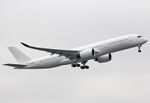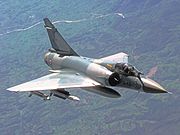Aerobus
This article is incomplete because it is pending further input from participants, or it is a work-in-progress by one author. Please comment on this article's talk page to share your input, comments and questions. Note: To contribute to this article, you may need to seek help from the author(s) of this page. |
| File:Aerobuslogo.png | |
| [[File:|250px]] | |
| Societas Ventismara (SV) | |
| Traded as | AER |
| Industry | Aerospace, defence |
| Predecessor | Folbert-Lapidot and others |
| Founded | 1974 |
| Founder | Some Ventismariens |
| Headquarters | Artwingen, Lindenholt |
Area served | Worldwide |
Key people | Some Ventismariens |
| Revenue | |
| Total assets | |
| Total equity | |
| Owner |
|
Number of employees | A bunch of Ventismariens (FY 2017) |
| Divisions | Aerobus Defence, Aerobus Space, Aerobus Rotorcraft, Aerobus Commercial |
| Website | www |
Aerobus, officially Aerobus SV, is a multinational company with production plants and offices all over the Ventismar Union that designs and produces military and civilian air and spacecraft. It is one of the largest aircraft manufacturers in the world, as it is active in [a] countries, producing around [b] aircraft in 2017. It is amongst the most valuable companies on the Artwinger Stock Exchange (ASX), only outranked by Multilever. Around [c]% of the company falls under the ownership of several Ventismarien countries due to the importance of the company to the national defence to these nations. Next to 40% of ownership falling in the hands of national governments, the Ventismar Union also holds a share of 10%. The Ventismarien Space Agency also holds 10% of shares. The rest of the company is owned by smaller parties and individuals.
Aerobus' main civil aviation plants are located in [e] and [f] whilst a plant for military aviation is located in [g]. Most of the production and development of spacecraft such as satellites and launch systems happens in [h] where the company has a complex shared with the Ventismarien Space Agency. The main headquarters are located in Artwingen, Lindenholt. Other major offices can also be found in [i].
The company used to be split up in divisions that were based on the historical companies that make up the aerospace giant. From 2008 onward the company was restructured and now only has four main subdivisions: Aerobus Commercial, focused on the civil and commercial market. Aerobus Rotorcraft, specialising in both civil and military helicopters. Ventispace, which builds and designs satellites and launch systems such as the Virgo III and IV rockets. Finally, Aerobus Defence, which produces and designs military aeroplanes such as fighter jets like the ÆF88 and ÆF94, but also builds military transport aircraft, unmanned aerial vehicles and various other defence related aircraft.
History
Corporate organisation
Divisions
Joint ventures and subsidiaries
Management
Products
Civilian
| Image | Aircraft | Description | Capacity (max) | Range (MTOW) | 1st flight | Users | Status | Variants |
|---|---|---|---|---|---|---|---|---|
| Imagine an A300 here | Æ500 | 2 engine, short range single aisle passenger aircraft | 160 | 5,375 km | 1972 | Not in use, production ceased | ||

|
Æ510 | 2 engine, single aisle passenger aircraft | 280 | 6,500 km | 1982 | No, production ceased | ||

|
Æ520 | 2 engine, twin aisle passenger aircraft | 180 | 7,800 km | 1987 | In use, in production | ||

|
Æ530 | 4 engine, twin aisle passenger aircraft | 440 | 17,000 km | 1991 | In use, production ceased | ||

|
Æ511 | 2 engine, single aisle passenger aircraft | 236 | 5,950 km | 1993 | In use, in production | ||

|
Æ540 | 2 engine, twin aisle passenger aircraft | 440 | 11,750 km | 2001 | In use, in production | Freight (62 metric tonnes) | |

|
Æ550 | 2 engine, twin aisle passenger aircraft | 440 | 15,600 km | 2016 | Template:Country data Ashukal Air Ashukal |
In use, in production |
Military
| Aircraft | Description | Armaments | Specs | First flight | Users | Status | Number built/in service |
|---|---|---|---|---|---|---|---|
| ÆF75 "Aquila" |
Twin engine strike aircraft with multirole capabilities |
|
1975 | In use, production ceased 1994 | |||
| ÆF77 "Monoceros" |
Single engine fighter jet |
|
1977 | In use(?), production ceased 1992 | x Total produced: x | ||
| ÆF88 "Elanus" |
Single engine fighter jet |
|
1988 | In use, in production | |||
| ÆF94 "Accipiter" |
Twin engine multirole jet |
|
1994 | In use, in production | |||
| ÆC9 "not!A400M" |
Turboprop strategic/tactical air lift cargo plane |
|
|
2009 |
|
In use, in production | |
| ÆHxxx "not!EC725" |
Tactical transport helicopter |
|
|
2000 |
|
In use, in production |
Total produced: 200 |
| ÆHxxx "Sagittarius" |
Attack helicopter |
|
|
1991 | In use, in production |
Space
Aerobus has an entire division of the company devoted for outer space products. The space division, called Ventispace, has a strong connection with the Ventismarien Space Agency. The most notable product of Ventispace is the Virgo-class rocket family. The Virgo-class was first designed and launched by Lindian aerospace manufacturer Folbert-Lapidot. After the merger of Folber-Lapidot in to Aerobus the project was continued. In 2005 the Virgo IV rocket was launched. It replaced the under-powered Virgo III, whose base architecture intended it to be an intercontinental ballistic missile. Currently the Virgo IV is the most up-to-date and most powerful launch vehicle produced by Aerobus. It can launch over 20,000 kilogrammes in to LSO and 11,000 kilogrammes in to a transfer orbit. A major drawback of the Virgo IV is the large cost of a single launch, and the fact that the craft is not human rated.
The issues with the Virgo IV are to be overcome by the Virgo V, set to release somewhere in 2020. This launch vehicle will be rated for human flight and can launch a payload similar to the Virgo IV at half the cost.
Next to the launch vehicles, Aerobus also produces space craft such as commercial satellites and research probes.






